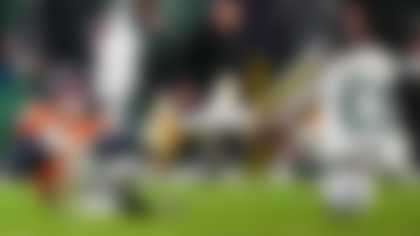THE MAGNIFICENT SEVEN
Get to know more about the rest of the 2010 Hall of Fame inductees:
**Rickey Jackson**
Team:Saints/
49ers
Position: Linebacker
Seasons: 15
John Randle went to junior college before he entered Texas A&I University (now known as Texas A&M-Kingsville). Going into his senior year, he probably wasn't on anybody's scouting list. Then, in the first week of the 1989 season, Texas A&I played Southwest Texas State.
Southwest Texas State had an offensive lineman by the name of Jeff Novak, who was on every scout's list. When people came back to look at the film, Randle absolutely destroyed Novak.
He set Novak's career back, and he didn't get drafted until the seventh round.
Randle didn't get drafted at all, but only because nobody knew where he could play. He was 6-foot-1 7/8, 246 pounds; the best 40-yard dash time he had was 4.88 seconds. His brother, Ervin, played in the league as a linebacker for eight seasons.
Teams tried John out as a linebacker, too, but he didn't have the ability to drop into space or play in coverage.
This is what I wrote about him in my scouting report at the time:
He's not a butterball, but he's not a racehorse. He's undersized. He's a one-gap penetrator. Plays with great leverage. Rolls his hips. Has no fear. Loves collisions. Never took a play off. He is very explosive out of his stance.
Randle signed with Minnesota as a rookie free agent on May 4, 1990. The Vikings tried to play him at defensive end his first year, and he just wasn't a pass rusher from the end position.
The next year, defensive coach John Teerlinck got a hold of him, and moved him inside to tackle. He started eight games and had 9.5 sacks. This guy played hard the entire game, and nobody could block him.
Randle was able to make other players around him, like Chris Doleman, look better. Sacks are probably one indication of how well a team is going to do in the playoffs.
Normally, the teams with the most sacks are going to go the furthest in the playoffs. Randle opened things up, enabling others to make plays.
He finished his career with 137.5 sacks, which is tied for sixth all-time with Richard Dent.
As one of the first players to jaw constantly on the field, Randle helped usher in the modern game within the game of trash talking.
He ended up playing in seven Pro Bowls and had eight consecutive seasons of double-digit sacks, the second-most all time.
After three final seasons in Seattle, Randle's Hall of Fame career came to an end, but not before he showed that an undersized player lacking great speed could still become a legend with a furious competitive spirit.




